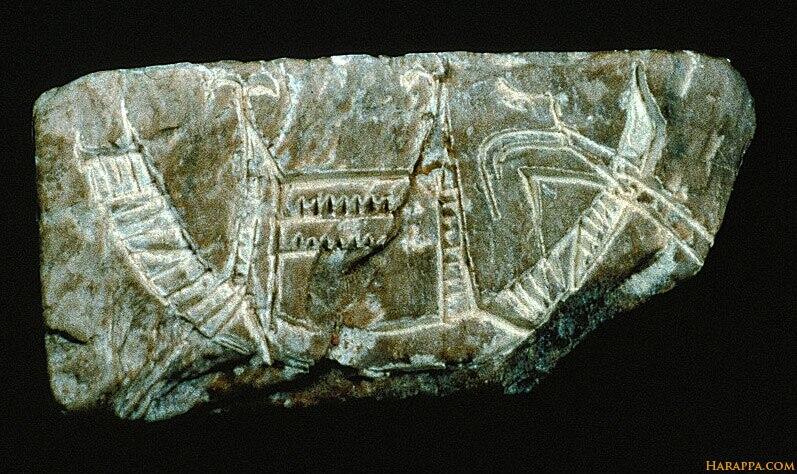By StephanieV. April 20th, 2015
The nautical historian Basil Greenhill makes an interesting point about why this boat style may have endured on the Indus: "As for the punts [long, narrow, flat-bottomed boats, square at both ends and propelled with a long pole, used on inland waters chiefly for recreation], their silhouette bears perhaps some resemblance to that of the boat depicted in one of the two scribings of boats found at Moenjo Daro, the Indus civilization site which lies on the west side of the river roughly in the center of the long stretch of the Indus on which these boats are to be found today. Models of carts found at Moenjo Daro are exactly like the bullock carts currently found in the locality; but to suggest that the boats remain likewise little changed is to push back the development of the sophisticated flat-bottomed punt a long, long, way in the history of man's efforts to make a living on the water.
Simple people who have suffered no great upheaval in their society tend to cling to the familiar, if it serves its purpose, even though the results of forty generations of slow thought and experiment and chance lies alongside them at the same wharf. This is particularly true of the boatmen, partly because to depart from established practice may mean death by drowning, or worse still, loss of the means to keep alive, but mostly because at most times and at most places in the story of man boatmen have been poor, and the poor have no means to bring about change." (Boats and Boatmen of Pakistan, 1971, p. 182).
See also - An Indus Boat Seal.

